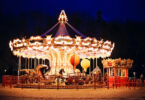London is one of the world’s most popular destinations. A vast and varied metropolitan area with a wealth of attractions and centuries of history, the capital of the United Kingdom is Western Europe’s biggest city, and arguably the world’s best hub to getting anywhere else on the planet. But, it also can be a challenging place to navigate if you’re on your own and unfamiliar with London’s impressive array of transportation options.
Before we dive into any details on how to get around, we should point out that public transportation in London is extremely safe. In most cases, it’s the cheapest and often quickest way to travel around town. Virtually every Londoner is well-acquainted with the system and takes some sort of public transport on a regular basis. Although Londoners can come across as reserved, they’re usually happy to field any basic questions you might have as a visitor.
Before you visit, take time to peruse the Transport for London (TfL) website or Visit London’s Official Visitor Guide for updates and information on fares, routes, scheduled maintenance, and more.
Get an Oyster Card
First things first, when you arrive in London, purchase a Visitor Oyster Card. An Oyster Card is a smart card you can use to pay for travel on London’s public transport. We’ve listed single-fare prices for most of the options below, but you should note that this pay-as-you-go card is usually cheaper and more efficient than paying for single journeys. It offers daily capping in line with prices for a Day Travelcard. So, if you’re making multiple trips during the day, it definitely pays off. The Visitor Oyster Card differs from ordinary Oyster Cards as it offers a range of special offers and discounts for attractions and activities around London. There’s a Young Visitor discount as well, which allows children from ages 11 to 15 access to public transport for a half-full rate. Children under 11 years old travel for free!
For a Visitor Oyster Card, there’s an activation fee that’s non-refundable. If you buy your Oyster card in London, you pay a deposit which is refundable by cash when you return the card at a station with attendants (you can do this at Heathrow and most mainline rail stations). You’ll find machines to purchase Oyster Cards at all airports and rail stations. Another idea is to buy them online so that they’re ready and loaded with credit, that way you’ll have one less thing to worry about once you’re flights to London have landed. The TfL recommends £15 in credit for a two-day visit and £30 for four days. Best of all, you can put as much credit on your card as you like, and it never expires.
Take the Tube

The London Underground — aka the Tube — is the city’s Metro (like the New York subway). It’s the most commonly used mode of transportation both visitors and locals. The network of 12 (mostly) underground trains covers much of London and even stretches out to stations in neighboring counties of Buckinghamshire, Essex, and Hertfordshire. There’s a Tube station at Heathrow Airport, offering straightforward, inexpensive transport into town. Generally, the Tube runs Monday to Saturday from 5 a.m. to midnight, with certain lines running 24 hours a day.
Before taking the Tube, have a look at its iconic map and note that it’s not illustrated to scale. Oftentimes, it’s quicker to just walk between stations. The best example of this is the short distance between Covent Garden and Leicester Square Stations. It actually takes longer to go by Tube than to take the one or two-minute walk between them. Also, note that the map is divided into different zones. There are nine fare zones in London. What you might think of as “Downtown” London is Zone 1. Most people visiting London as a tourist or for business find that they spend the majority of their time in Zones 1 and 2. A single-journey fare within Zone 1 costs £2.40 with an Oyster Card or £4.90, while a single fare between the zones is anywhere from £2.40 to £2.90.
Like in any big city, the Tube fills up quickly during rush hour in the morning and at night. Usually, the cars at the far end of the train are emptier than those in the middle. You can spot a London Underground station by the roundel, a red circle with a blue bar through it. Don’t forget to mind the gap!
Or, Take the Overground
The London Overground offers a similar service to the Underground, except…well, we’ll let you figure out the difference. It connects Greater London and parts of Hertfordshire with a rail network of 112 routes. Launched in 2007, the cars are newer and cleaner than the Underground train ones. The Overground is especially convenient for travel in East and South London. Most single trips cost £1.70, and Overground stations are marked with an orange roundel.
Use Mainline Rail Services
In addition to the Underground and the Overground, there are national and regional rail services. Depending on where you are and where you’re going, these can be your quickest and most convenient option. They’re great for trips to and from London as well as other parts of the UK. You’ll know you’re at a mainline station if you see the symbol of two white parallel bars with opposite pointing arrows on a red field.
Ride the Bus

London’s bright red double-decker buses are a cherished symbol for the city. They’re also a smart way to get around. Bus stops are marked with red roundels with info about which buses stop there as well as maps of their routes and schedules. The standard fare is £1.50 with contactless bankcards or Oyster Cards on all London buses.
Travel on the DLR
The Docklands Light Railway (DLR) is an automated light metro system that’s great for trips around East London, particularly to and from the financial districts of the City of London and Canary Wharf. You can also access London City Airport via the DLR. Most single trips cost £1.70. Make sure to look out for the blue roundel.
Hop the Tramlink
The Tramlink is another light rail system. It serves South London, mostly around the Croydon area as well as Wimbledon. The standard fare is £1.50 with contactless cards or Oyster Cards on all trams in London. Paper single tickets are available from all ticket machines at tram stops for £2.60. The Tramlink roundel is a green circle with a blue bar.
You may also like: Which Mode of Transportation is Best for Your Travel Plans?
Cycle through Town

Bike lanes in London are usually better than in the ones in big American cities, but not nearly as good as the bike lanes in Europe. The TfL has self-service bike-sharing available for short journeys in Central London. There are thousands of bikes at several docking stations situated every 300 to 500 meters in Central London. You can hire a bike for as little as £2 per ride with a bank card.
Fly High with Clippers, Air Lines, or the Eurostar
A fun and scenic way to see London on the go is the Emirates Air Line, a cable car link across the Thames between North Greenwich and the Royal Docks. In reality, this isn’t all that useful for commuters, but the ride is fun and the views are amazing. Another picturesque way to cruise through London is the Thames Clipper. This fleet of “river buses” connects piers along the Thames, including ones at Greenwich, the Tower of London, The London Eye, and Westminster.
For trips farther afield, the Eurostar has trains that cross the English Channel en route to Paris, Brussels, and other parts of Europe. The Eurostar’s London terminus is St. Pancras International Station. Also, the Crossrail is a high-speed rail service connecting London with parts of Southeastern England from Shenfield, Essex in the east to Reading, Berkshire in the west, and a handful of stops in Central London along the way.
Explore London by Car

If you’re planning to drive around London, be aware that traffic is often a nightmare, and public transport is usually faster. Also, bear in mind that there’s a Congestion Charge of £11.50 to enter Central London by car between 7 a.m. and 6 p.m. Monday to Friday. Of course, there are London’s Black Cabs darting across town too. London cabbies are incredibly knowledgeable about London and love to share advice. Look for a cab with its “taxi” light on and get the driver’s attention by waving. Some cabs offer bank card payment. Ask before you get in if you’re not sure you have enough cash for a ride. And, just because they’re called “black” doesn’t mean you won’t see them in a variety of colors.
Also, it’s worth checking to see if your ride-sharing apps work when you visit. You’ll certainly find Uber is popular in London and that rates are often considerably cheaper than Black Cabs. There are also minicabs in London. These are private hire cars, registered with the TfL and offer lower rates than Black Cabs. You’ll find minicab offices near bigger stations and busier parts of town. Never get into a minicab that you didn’t call for through an office and always look for a license in the front windshield of the car before getting in. Cheerio!
Care to leave any tips on getting around this amazing city quickly, safely, and cheaply? We’d love it if you left some advice in the comments section below. Cheers!









[…] Read my complete post at Miles Away. […]
[…] More info about purchasing Oyster Cards, public transportation prices and other options for getting around London can be found in this Going Places blog post (written by yours truly): onetravel.com/going-places/how-to-get-around-london-for-cheap […]